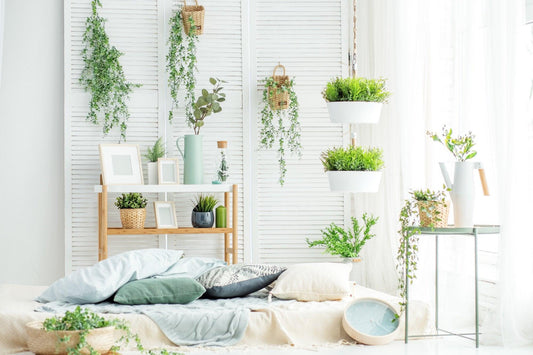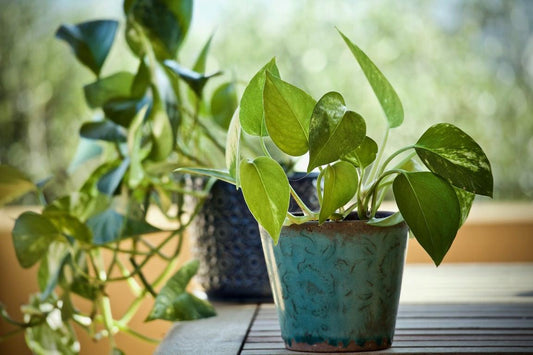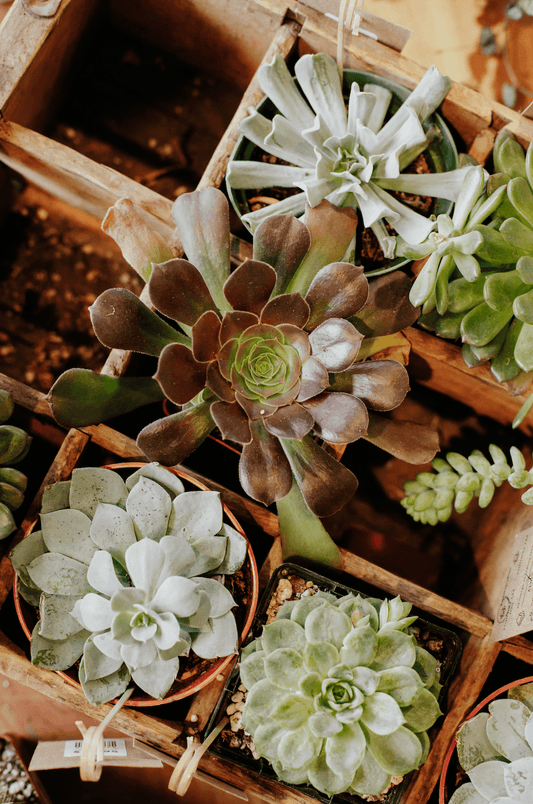Carnivorous Plant
How to Care for the Carnivorous Plant
Overview
Carnivorous plants are not a plant for beginners, but if you have a moderately green thumb and patience, a carnivorous plant would be a quirky (and helpful!) addition to your houseplant collection. This plant feels more like a houseguest sometimes; not only is it a bit high maintenance, but it also eats similar to how animals do and does not take in nutrients from soil like most plants.
Carnivorous plants are just as described: carnivorous. Carnivorous plants grow in soil with poor nutrient levels, like bogs. Because of this, they have adapted to seek nutrients elsewhere, namely from bugs and small animals. With that being said, don’t throw out your mouse traps—your carnivorous houseplant isn’t going to be catching any mice. Carnivorous plants only get big enough to do this out in the wild, and in habitats where larger pests are more abundant. Most likely, your carnivorous plant will be feasting on flies, ants, and spiders.


Profile
There are a lot of carnivorous plant species from all over the world, but the most popular for an indoor space are the Venus Flytrap, the Pitcher Plant, the Sundew, and the Bladderwort. Because of the wide variety, carnivorous plants come in all shapes, sizes, colors, and textures. For example, Venus Flytraps have jaws that lock closed around its prey, whereas a Pitcher Plant has a bowl-like body that is too slippery for a bug to escape. Carnivorous plants have some sort of trapping mechanism, such as jaws set off by little hairs, a slippery basin filled with digestive liquid, or an incredibly sticky surface.




Low light
In nature, carnivorous plants are found in wetlands, swamps, and tropical environments. Carnivorous plants love an abundance of water, and live inherently in nutrient-deficient swamps. These plants like their soil consistently moist at all times. Don’t let your carnivorous plant’s soil dry out more than 25% before watering, and never let it dry out completely. Soil tends to dry out quicker in the summer, which means you might have to water more frequently then. Additionally, carnivorous plants like a little extra humidity, so consider investing in a humidifier or spray bottle.

Occasional
Almost all carnivorous plants prefer bright, indirect light. They can tolerate low light, but the plant’s growth will slow down. Ideally, carnivorous plants would prefer to live on a nice sunny windowsill. No need to fertilize your carnivorous plant. They are used to nutrient-poor soil, and will not intake nutrients through the soil like other plants.

Easy breezy

Pet Friendly
FREQUENTLY ASKED QUESTIONS (FAQs)
on Carnivorous Plant
How do carnivorous plants attract bugs?
For the most part, bugs come to carnivorous plants willingly. All carnivorous plants emit a wide variety of different scents invisible to humans that are meant to lure prey. Baited by smells of nectar or the promise of a space to hide, bugs will fly or crawl to the plant. Pitcher Plants also have a liquid chemical lure that sits in the bottom of their pitcher. This liquid is called phytotelmata, and while it smells good to the insect at first, it quickly gets trapped, drowned, and dissolved in the liquid.
Will my carnivorous plant die if it doesn’t catch any bugs?
Carnivorous plants typically catch more than enough bugs when living outside, but inside sometimes poses some dietary troubles. Your carnivorous plant will rarely die from not eating enough, but its growth will slow down. Just like people, plants of all types need nutrients to grow big and strong. Without the proper nutrients, they stop growing.
Never try to feed your carnivorous plant supplemental food. This means, don’t offer your Venus Flytrap a bite of your hamburger. Carnivorous plants will rot if you give them real food. You can toss in dead bugs proportional to the size of its trap, but you will need to set off its trapping mechanism. Venus Flytraps close when movement triggers the delicate hairs in its mouth, and a dead fly isn’t going to set that off, so grab a toothpick and wiggle the hairs a little to help send signals to the traps that it’s time to eat!
If my Venus Flytrap’s jaws close, will they reopen?
Yes, and no…
Even though carnivorous plants’ trapping mechanisms sometimes resemble or act similar to a mouth and stomach, their anatomy doesn’t work the same way ours does. Each individual trap has a set number of times it will open to receive food before it has expended all of its energy. The expended leaf will eventually dry up and die.
This is why it’s extremely important to not try to set the traps off for fun. It can be so tempting to poke your finger at the hairs to see it close, but all you’re doing is making your plant miss out on possible nutritional opportunities. When the leaf dies without absorbing any nutrients, they won’t have the energy to grow a new leaf. Trust that when a bug arrives, your carnivorous plant will do what it’s made to do.
Can carnivorous plants still get infested with pests?
Ironically, yes, they can. Carnivorous plants can’t catch ‘em all, unfortunately. Carnivorous plants can get all of the same pests that normal plants can get. Most carnivorous plants are highly sensitive to most pest removal chemicals, so we recommend going as simple and organic as possible. Most pests can be treated with a canola-oil-based treatment or diluted rubbing alcohol. We recommend using PureCrop 1 as an organic, food-safe alternative to pesticides.
Can carnivorous plants tolerate the cold?
Carnivorous plants go dormant in the wintertime. This means a plant will stop growing until better living conditions present themselves. Since carnivorous plants like a warm, humid environment, when those aspects are taken away from them, they shut down in order to not die. With that being said, a lot of people throw their carnivorous plants away in the winter, thinking they died. During warm weather, new leaves would grow just as soon as one died away, but new leaves will grow much less frequently in cold weather, leaving a plant that is more regular foliage than carnivorous foliage. A tip for checking if your plant is dormant or dead, is to check the roots; if the roots are firm and white, it is still alive, but if they are mushy or brown/black, it is most likely dead.
Can carnivorous plants be potted with other plants?
Carnivorous plants prefer to be potted individually. Because of the nutrient-poor soil they live in, carnivorous plants don’t like the competition. More than one plant means the few nutrients the soil has must be divided amongst the plants. Usually, this will result in one plant taking all the nutrients, leaving the other to suffer. Most non-carnivorous plants couldn’t survive in those soil conditions, anyway.




